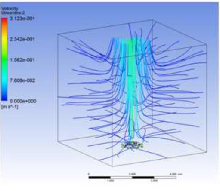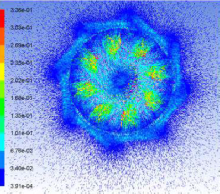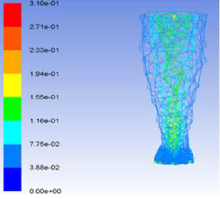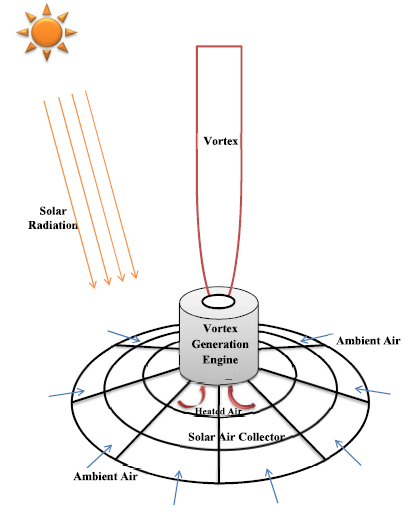THE ATMOSPHERIC VORTEX ENGINE (AVE) IN GENERAL
The Atmospheric Vortex Engine (AVE) is a device for producing an artificial vortex which works on the principle of thermal energy transfer in the atmosphere. The operation of AVE is based on the fact that the atmosphere is heated from the bottom and cooled at the top. Here, the vortex is produced by admitting air tangentially at the base of a circular wall. Thermal energy transfer in the atmosphere occurs from a high temperature zone to a lower one by means of convective vortices where mechanical energy is produced.
This procedure could turn into a major source of clean energy and could give different advantages, for example, precipitation and cooling. Vortex engines would help mitigate the phenomenon of global warming by decreasing fuel utilization or by facilitating upward heat convection. The geometrical parameters considered in the making of the model provide a decent starting point to future designs. This research also serves as a forerunner for future research.
INTRODUCTION
The demand for power is increasing and requires a superior, dependable and cleaner sources of energy. The Atmospheric Vortex Engine (AVE) is a new way of meeting our power needs for sustainable, renewable energy from natural forces.
Just like devices that make use of sunlight, wind, wave and tidal energy, the Atmospheric Vortex Engine (AVE) can also generate electricity.
The idea behind the Atmospheric Vortex Engine (AVE), primarily introduced by Louis M. Michaud, a Canadian Power Plant Engineer, was to eliminate the need for large physical chimneys used in cooling towers and to make use of wasted energy.
The Atmospheric Vortex Engine (AVE) uses the controlled characteristics of tornadic flow and the physical wall of a chimney is replaced by a wall of air forced by the centrifugal force of an artificially generated vortex.
The Atmospheric Vortex Engine (AVE) has the same thermodynamic idea as the solar chimney. A solar chimney consists of a tall vertical tube, a transparent solar collector surrounding the base and a turbine located at the inlet of the tube. One of the factors influencing the heat to work conversion efficiency of a solar chimney is the height of the chimney. The efficiency is directly proportional to the height.
The working of the Atmospheric Vortex Engine (AVE) is based on the principle that the atmosphere is heated from the bottom and cooled at the top. The heat required to sustain the vortex once established will be the naturally occurring heat content of surrounding air. The vortex is produced by admitting the air tangentially at the base of a circular wall. Thermal energy transfer in the atmosphere occurs from a high temperature zone to a lower temperature zone by means of convective vortices where mechanical energy is produced.
The warm humid air enters the Atmospheric Vortex Engine (AVE) via entry ducts in the circular
Wall.

And it is forced to flow in a circular fashion.

As the air whirls around, a vacuum wil form in the center, which holds the vortex together as it extends.

.
The circulating warm air creates a vortex, drawing in more air. This inflow of air will be used to generated power by means of a turbine.
The heat required to sustain the vortex once established will be the naturally occurring heat content of surrounding air. A central circular opening in the roof forces the air in the cylinder to converge.
The circulating warm air creates a vortex, drawing in more air. This inflow of air will be used to generated power by means of a turbine















